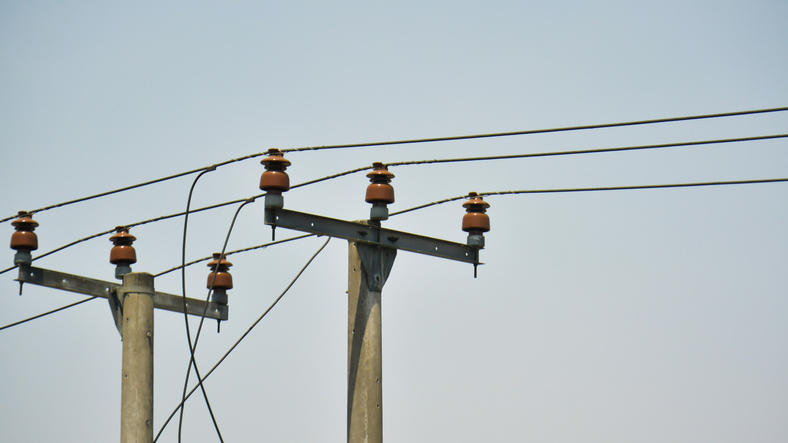A tale of two poles
February 28, 2024
In a recent interview with Victorian Health Minister, Mary-Anne Thomas, Melbourne ABC presenter, Raf Epstein, led off with a classic gotcha question:
I know its not your portfolio area, but how many Victorian homes are still without power since last weeks catastrophic storms?
Credit to Thomass political smarts (and probably good staff work) she shot back with an exact number in the thousands.
Epsteins second barrel was another shock-jock standard: Well whose fault is it that its taking so long to get them re-connected?
Thomas: The privatisation policies of previous Liberal governments.
Epstein missed the chance to point out Labor had started the privatisation process by selling 51 percent of the States newest power station in 1992, and had also governed for twenty of the twenty-four previous years.
Instead, he asked whether regulation changes could have helped. More on that below.
This article was prompted by the above exchange on ABC Melbourne radio - and also because for part of the last week, while 1000s of Victorian homes and businesses were waiting to have their power restored, large teams of electricity workers had been busy in my street replacing two electricity poles. (This was not in response to any immediate need; rather it was part of an ongoing program of scheduled upgrade and maintenance.)
When I asked some of the workers why they werent working to restore disrupted services, some responded that continuing routine maintenance as scheduled was critical, as it relied on a massive and complex array of regulatory approvals and permissions from both state and local government authorities. (So maybe some regulatory flexibility would help the current situation one tick to Epstein.)
However, the workers might also have fessed up that they worked for (or were contracted by) Citipower and Citipower had no responsibility for the areas with storm damage. Here privatisation and regulation neatly intersect.
The Victorian Department of Energy website has the following advice:
Restoring power after an emergency
This is the responsibility of your local electricity distributor that owns and maintains the poles and wires bringing power to your home. (my bolding).
The Victorian Liberal Government of Jeff Kennett (1992-1999) was a pacesetter in privatisation, especially of state electricity systems. From the 1920s, Victorian electricity generation, transmission and distribution had largely been the responsibility of the State Electricity Commission (SEC), established under the initial leadership of the iconic Sir John Monash. On coming to government, Kennett and his Treasurer, Alan Stockdale, sold all remaining state electricity assets to multiple private entities.
The Victorian Government took a policy to re-establish the State Electricity Commission to the last election and a body with that name has been established. However, it doesnt hold a hose or deal with supply emergencies or at least, not yet.
Since privatisation, there have been numerous changes of ownership in all facets of electricity supply. When it comes to distribution, Victoria currently has five electricity distributors responsible for maintaining the poles and wires in five separate geographic areas. Most of the storm damage happened to the assets owned by AusNet in the eastern part of the state, so according to the Department of Energys advice, it would be AusNets responsibility to fix the storm damage. CitiPowers crews could get on with non-urgent pole replacement in CitiPowers territory.
Hardly all hands to the pumps in an emergency.
The Victorian Government has announced an independent review into the outages. How to maximise ALL available resources to deal with emergencies more swiftly may be something for consideration by the review, along with preventing repetition of reported maintenance failures by AusNet, in its separate role as a transmitter and owner of the six transmission towers that collapsed during the storms.
But dont hold your breath.
Predictably, the Liberal Opposition in Victoria have called the review a sham and are moving to set up their own Upper House review; the Greens have blamed it on the failure of coal-fired power stations; the Nationals on our failure to embrace nuclear generation or perhaps, our failure to embrace more household rooftop solar generation.
In reality, all of these responses are just a minor skirmish in the ongoing climate wars that started more than a decade ago and will probably dog the whole nation for decades to come.
But transitioning electricity systems from reliance on fossil fuels to efficient operation based on renewable energy is a very complex task for every nation and one where there is still no absolutely clear path forward. Fundamentally, it is a job requiring technical, scientific and engineering solutions.
Unfortunately, the transition task is torn between two poles of impossibility: on the one hand, the climate-change amelioration imperative means the scientific and technical requirements of the transition are secondary considerations to reducing emissions; on the other, privatising a natural monopoly has necessitated the creation of a forest of rules so that market forces, rather than technical needs prevail.
Continued political and ideological interference will only make the task longer, more expensive and with less predictable outcomes.

